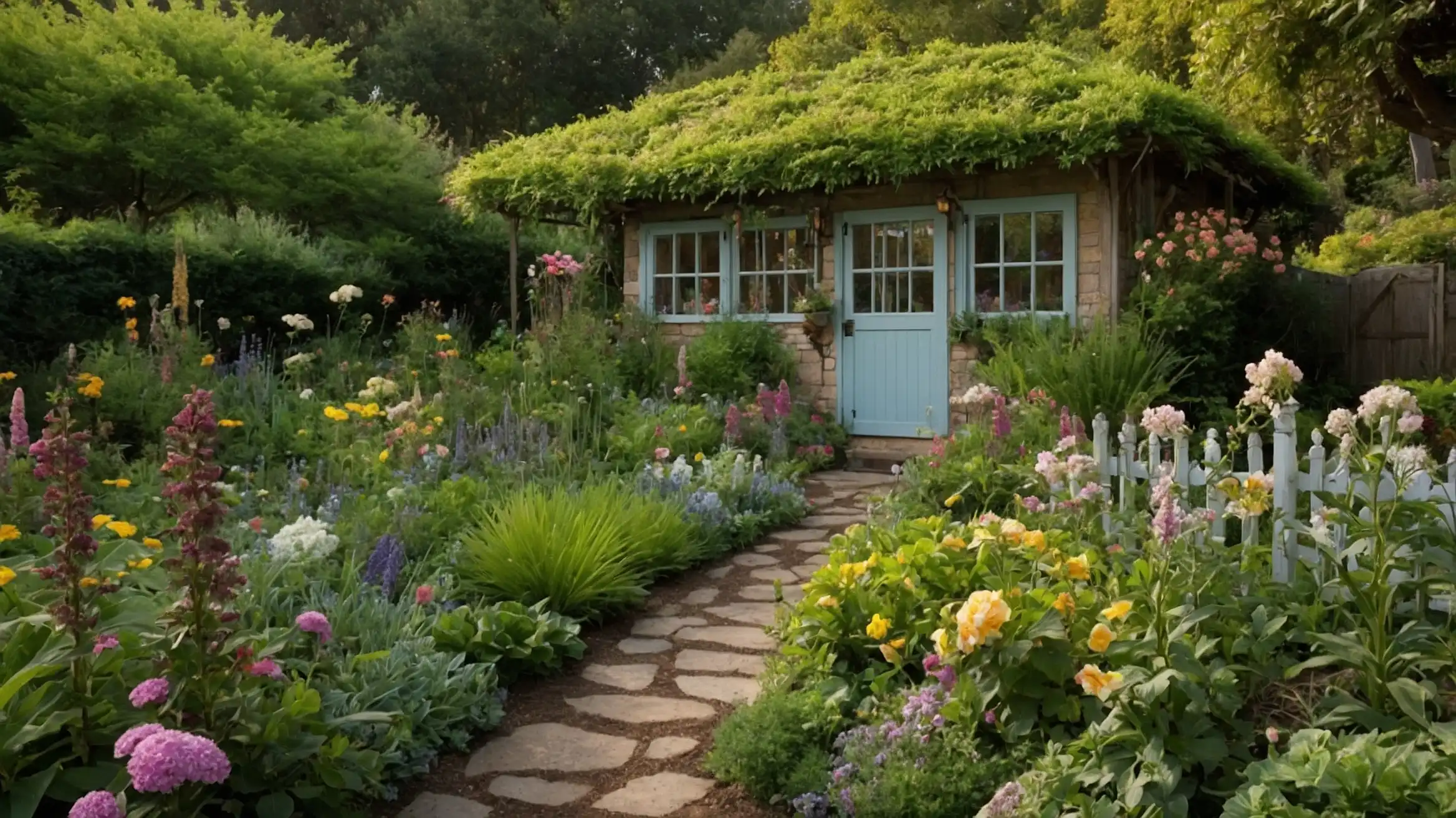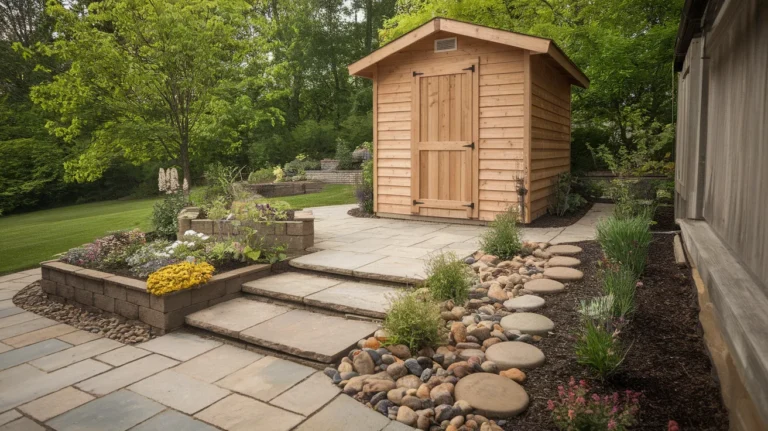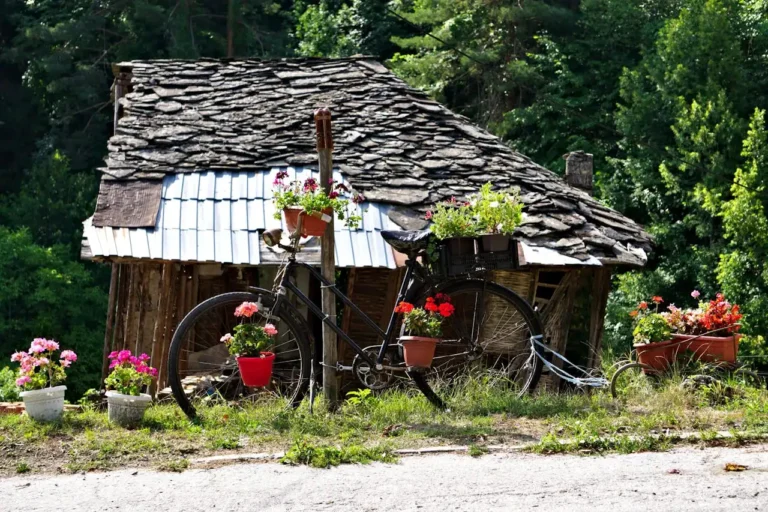27 Enchanting Cottage Garden Ideas to Create Your Own Magical Retreat
Cottage gardens captivate with their romantic charm and seemingly effortless beauty.
These delightful spaces blend flowers, herbs, and edibles in a relaxed style that feels both nostalgic and refreshing.
You don’t need a thatched-roof cottage to create this beloved garden style.
The cottage garden aesthetic works wonderfully in urban yards, suburban plots, and rural settings alike.
Let’s explore 27 magical cottage garden design ideas that will help you transform any outdoor space into a whimsical retreat bursting with color and life.
1: Curved Pathways
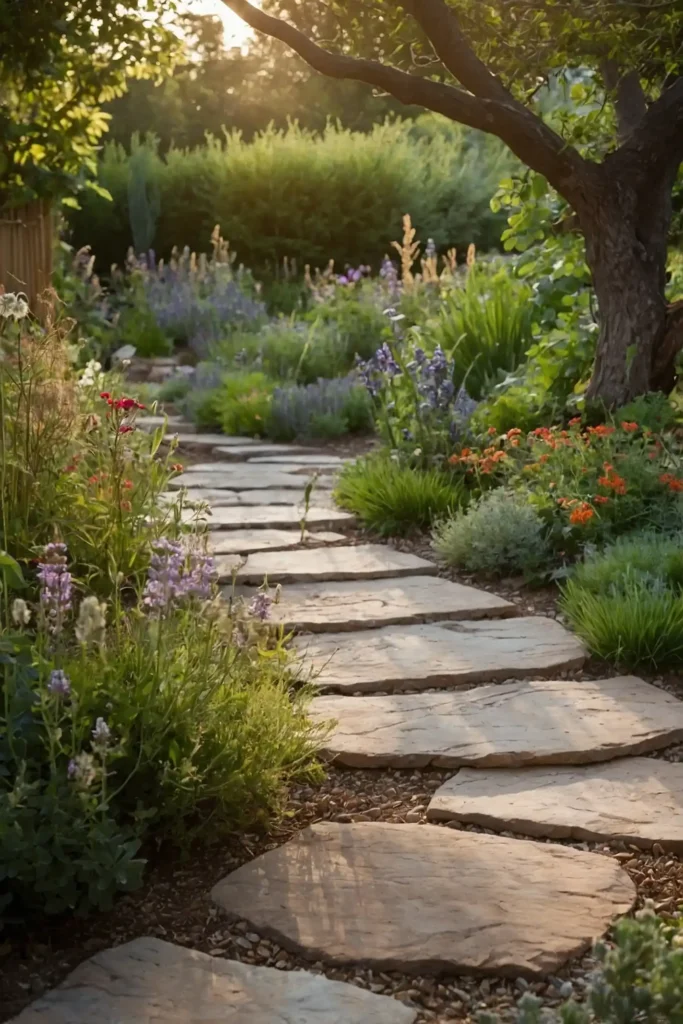
Create winding paths using natural materials like flagstone, gravel, or brick that guide visitors through your garden.
Curved routes feel more organic than straight lines and encourage exploration.
Allow plants to spill over edges, softening the boundaries between path and garden. This slightly untamed look is a hallmark of cottage style.
Consider planting aromatic herbs like thyme or chamomile between stones to release delightful scents when walked upon.
2: Picket Fence Backdrop
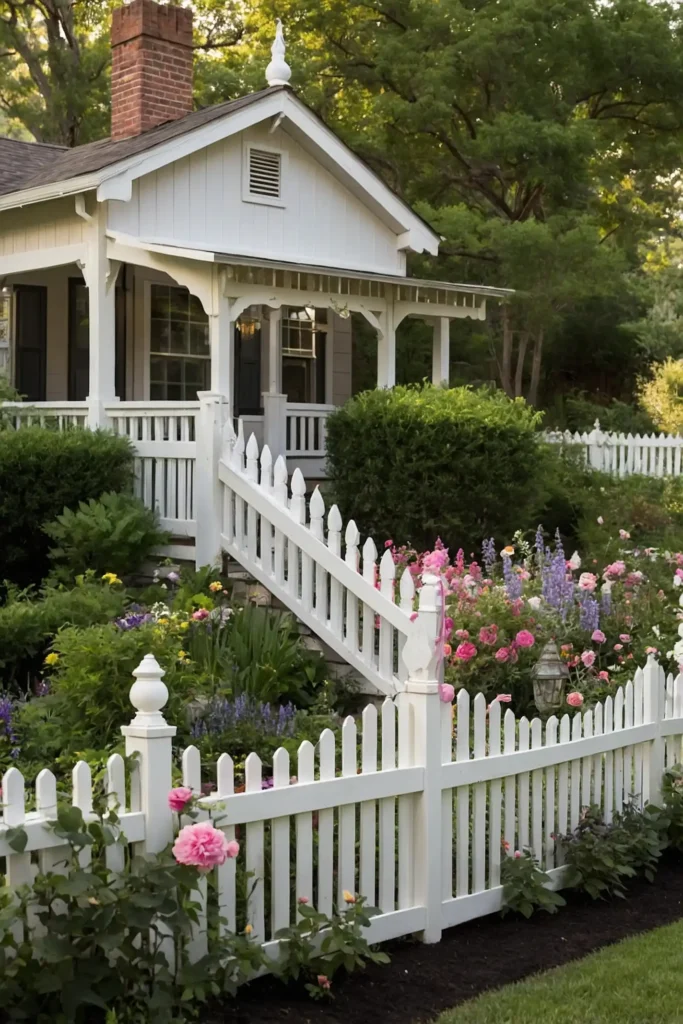
Install a classic white picket fence to establish the quintessential cottage garden framework.
This timeless boundary creates the perfect backdrop for colorful blooms while defining your garden space.
Paint it white for a traditional look or choose a weathered finish for rustic charm.
Plant climbing roses or clematis nearby to eventually weave through the pickets.
Even a short section can create the cottage aesthetic if you don’t need to fence your entire yard.
3: Romantic Arbor Entrance

Position a wooden arbor or arch at your garden entrance to create a magical threshold experience.
This vertical element adds immediate charm while supporting climbing plants.
Choose sturdy materials that can support mature vines like wisteria or climbing roses. Consider adding a gate beneath for added storybook appeal.
This welcoming structure frames garden views and creates a sense of anticipation for what lies beyond.
4: Abundant Self-Seeders
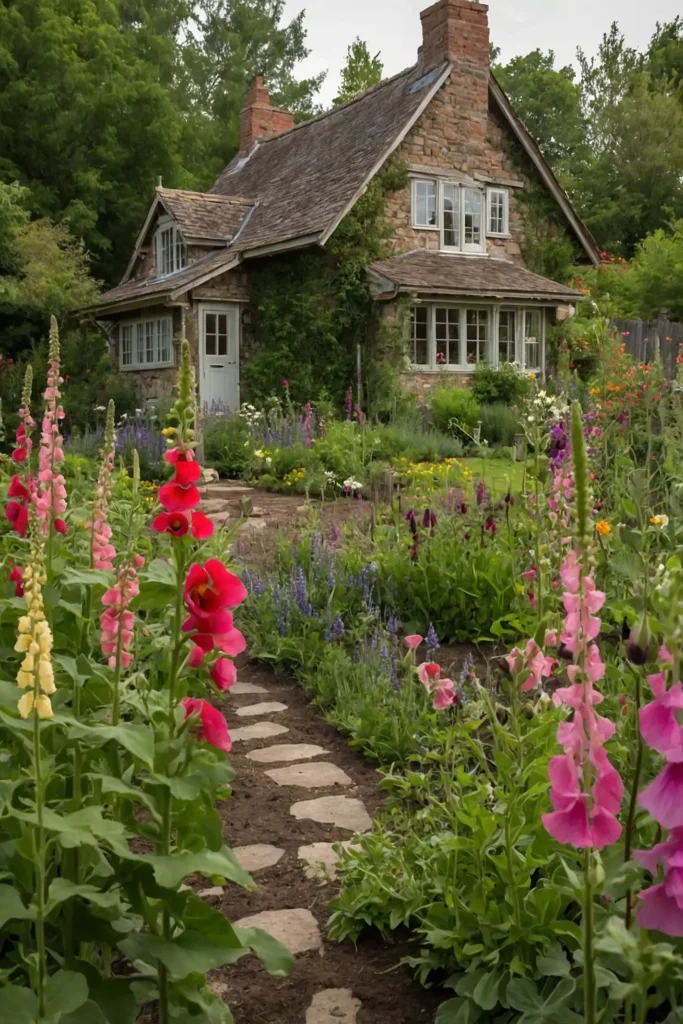
Incorporate plants that self-seed freely like foxgloves, hollyhocks, and poppies to achieve that characteristic cottage garden abundance.
These willing spreaders fill spaces naturally.
Allow them to establish where they please for a relaxed, unplanned appearance.
Remove only what becomes truly invasive, embracing some delightful garden surprises.
This approach reduces replanting while creating the layered, lived-in look that defines cottage gardens.
5: Climbing Roses

Train climbing roses along fences, walls, arbors, or trellises to add vertical interest and romantic charm.
Few plants embody cottage garden style more perfectly than these fragrant climbers.
Choose varieties known for disease resistance and repeat blooming for extended beauty.
Gently tie canes horizontally to encourage more flowering shoots.
Consider old-fashioned varieties like ‘New Dawn’ or ‘Zephirine Drouhin’ for authentic cottage character.
6: Herb Garden Integration
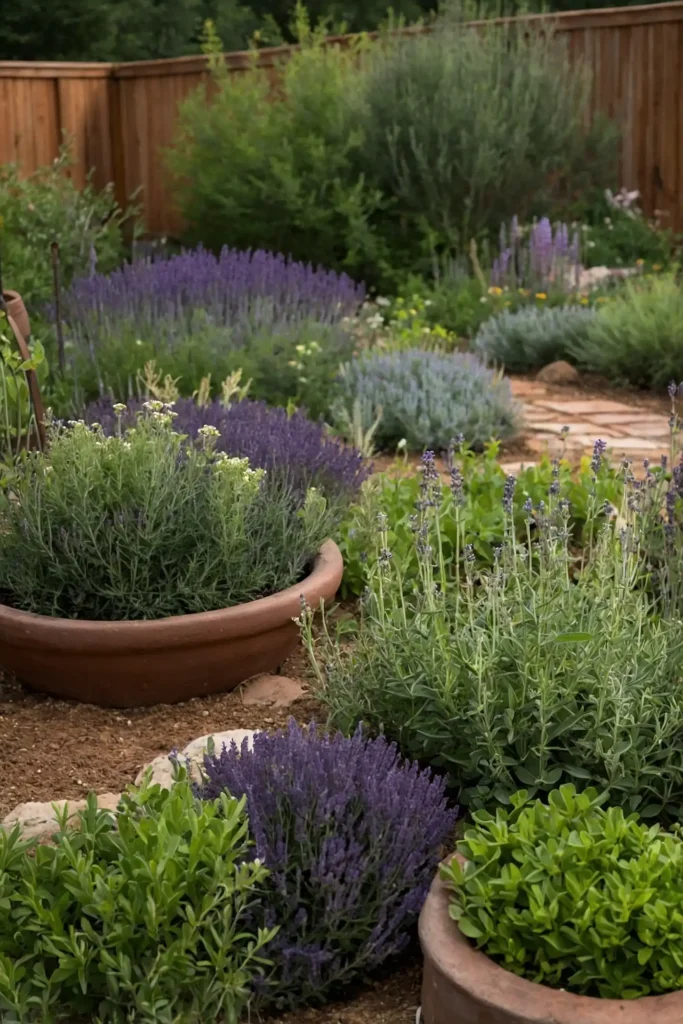
Weave culinary and medicinal herbs throughout your flower beds rather than isolating them in a separate herb garden.
This practical approach reflects the traditional cottage garden philosophy.
Plant lavender, sage, and rosemary as ornamental structural elements.
Edge paths with low-growing herbs like thyme and oregano to maximize space.
The mixed planting provides delightful fragrances while honoring the cottage garden’s historical roots as a functional space.
7: Multilevel Planting

Create depth by using plants of varying heights, with tall flowers at the back gradually stepping down to medium and low growers at the front.
This technique maximizes visual interest in limited space.
Plant hollyhocks, delphinium, and foxgloves as dramatic backdrops.
Fill middle areas with peonies, roses, and daisies for the classic cottage look.
This thoughtful arrangement allows you to showcase more varieties while ensuring all plants remain visible.
8: Vintage Container Display
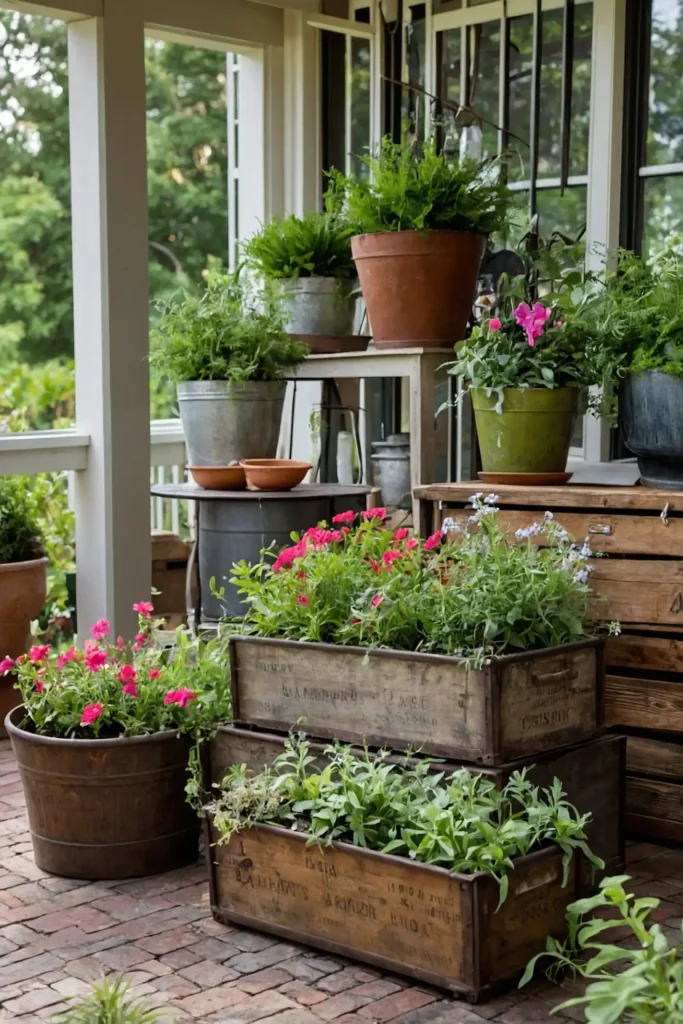
Incorporate weathered containers like galvanized buckets, wooden crates, and ceramic pots to add instant cottage charm.
Repurpose unexpected items as planters for whimsical touches.
Group containers of various heights to create vignettes near seating areas or entrances.
Plant abundantly, allowing flowers to cascade over edges for a generous look.
These portable gardens allow you to bring cottage style to patios, steps, and even rental properties.
9: Bird-Attracting Elements
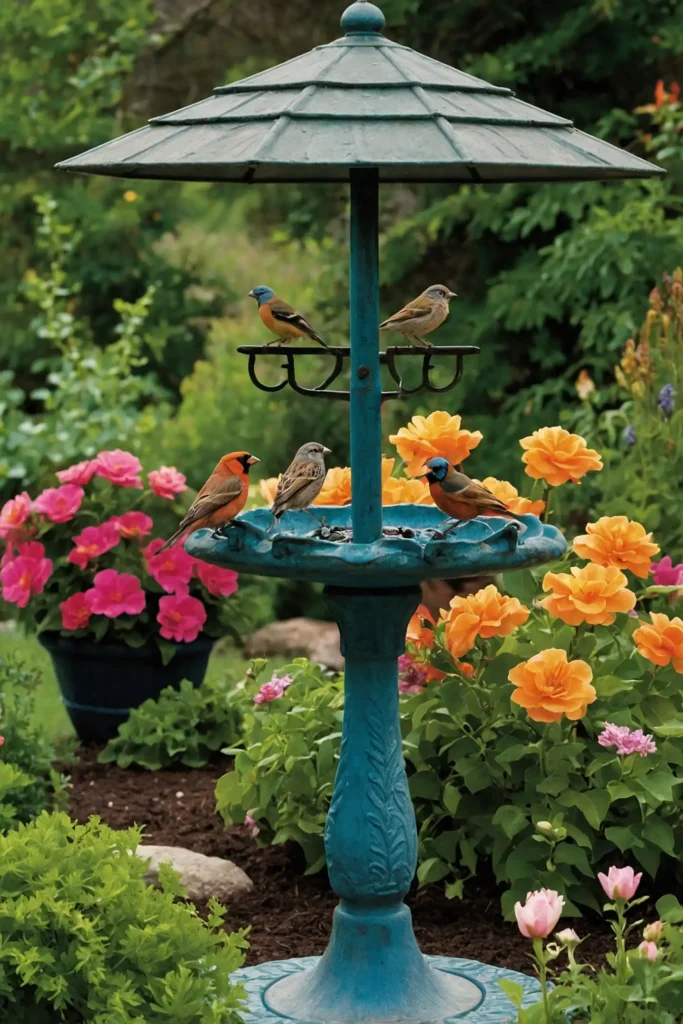
Install bird baths, houses, and feeders to invite feathered friends into your cottage garden.
These practical decorations add life and movement while supporting local wildlife.
Position bird elements where you can enjoy watching visitors from windows or seating areas.
Choose designs that weather beautifully like aged stone or oxidized copper.
The cheerful sounds of birds enhance the sensory experience of your garden retreat.
10: Cottage Cutting Garden
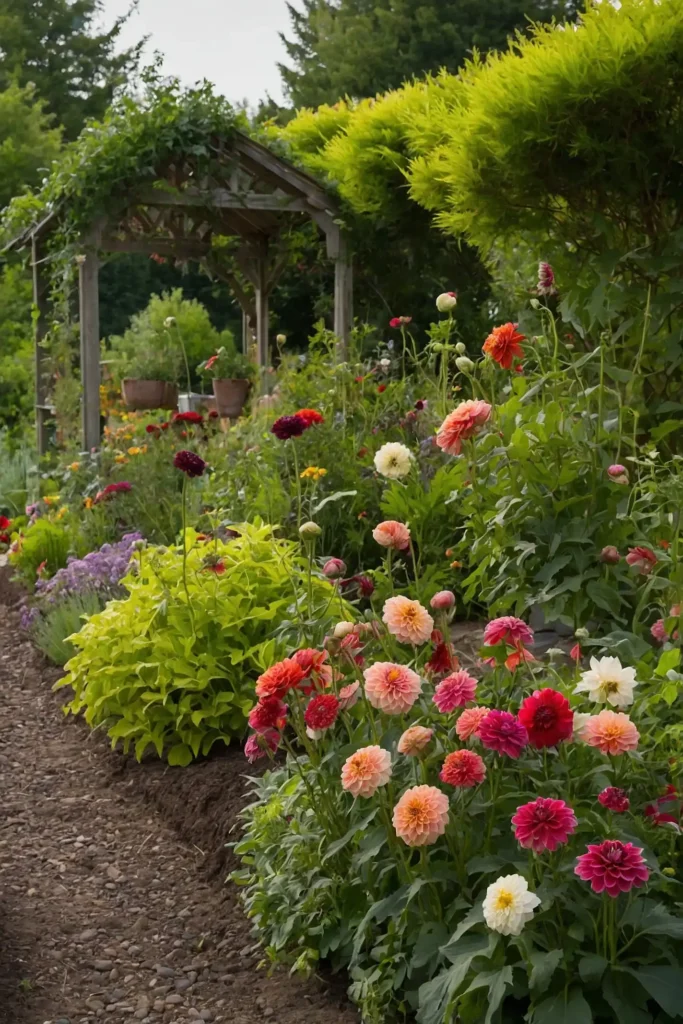
Designate an area specifically for cutting flowers to bring the cottage garden indoors.
Plant reliable bloomers like zinnias, cosmos, and dahlias in rows for easy harvesting.
Include evergreen foliage plants and interesting seedpods for year-round arrangement materials.
Position this practical area where frequent cutting won’t detract from your main garden display.
You’ll enjoy endless bouquets while maintaining the cottage garden tradition of bringing nature’s beauty indoors.
11: Layered Border Plantings

Create abundant mixed borders with no visible soil—a hallmark of cottage garden style.
Achieve this lush look by planting in layers with different bloom times.
Fill gaps between shrubs and perennials with annuals for continuous color.
Encourage ground-covering plants to spread beneath taller specimens, eliminating bare spots.
This dense planting suppresses weeds naturally while creating the romantic abundance that defines cottage gardens.
12: Rustic Wooden Bench
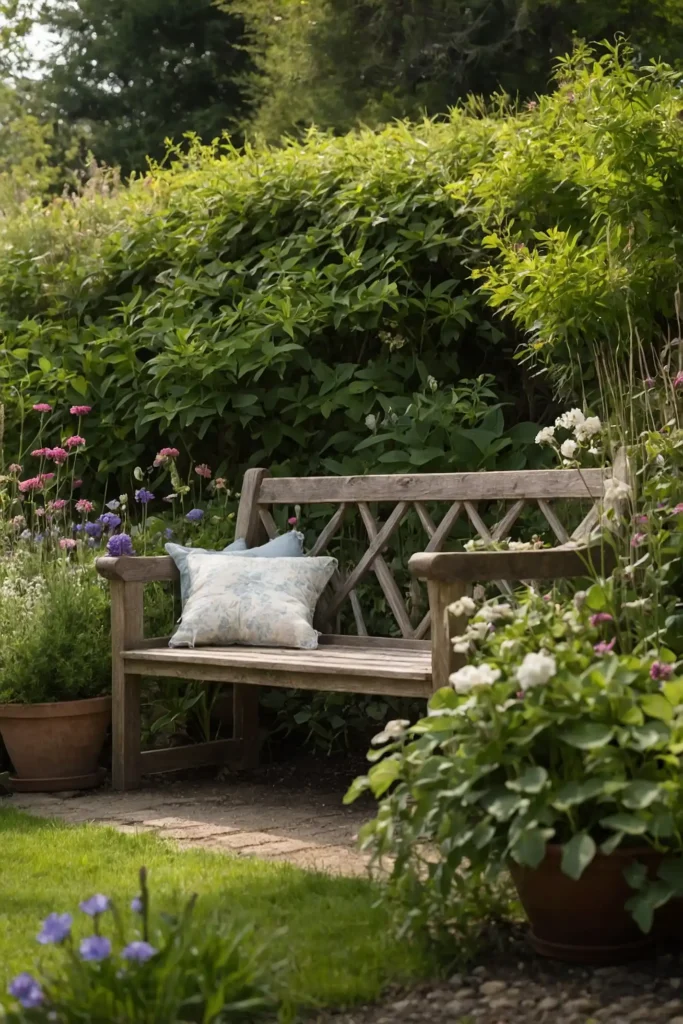
Place a weathered wooden bench in a sheltered garden nook to create a quiet retreat for garden contemplation.
This practical element adds instant cottage charm while providing a destination point.
Position it where you can enjoy a special view or fragrant planting.
Surround with shade-tolerant flowers if under a tree, or sun-lovers for open locations.
The bench becomes more charming as it weathers, developing the patina that cottage gardens celebrate.
13: Old-Fashioned Flower Varieties
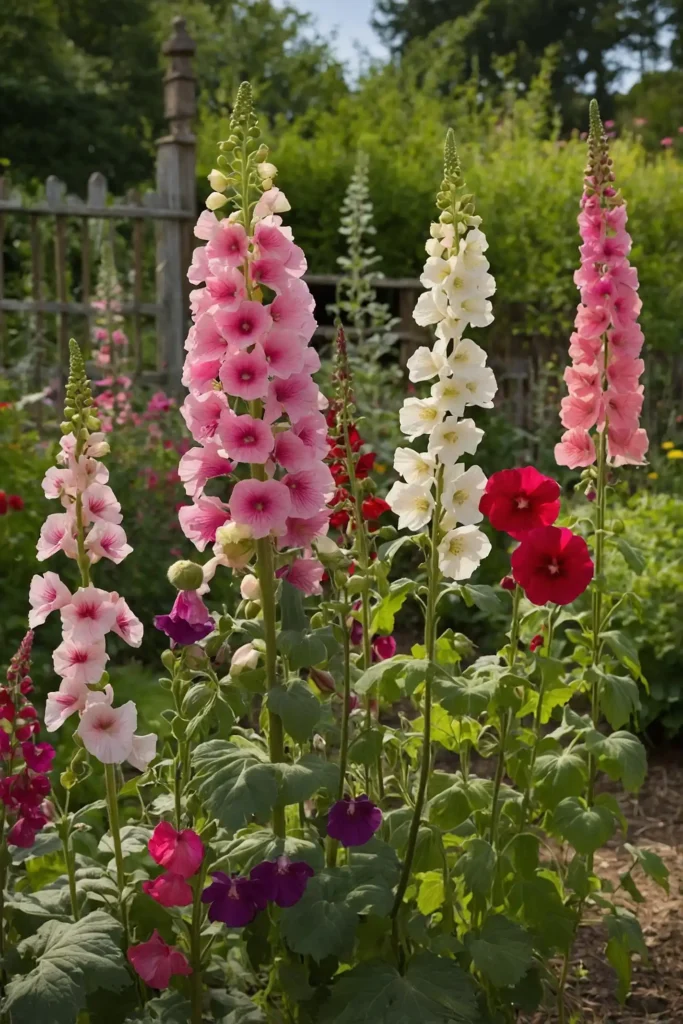
Choose heritage flower varieties that have graced cottage gardens for generations.
Plants like hollyhocks, bleeding hearts, and sweet william bring authentic historical character to your space.
These time-tested varieties often offer superior fragrance and unique forms.
Many attract beneficial insects better than newer hybrids.
Heirloom plants connect your garden to a rich horticultural heritage while providing tried-and-true performance.
14: Fruit Trees and Berries
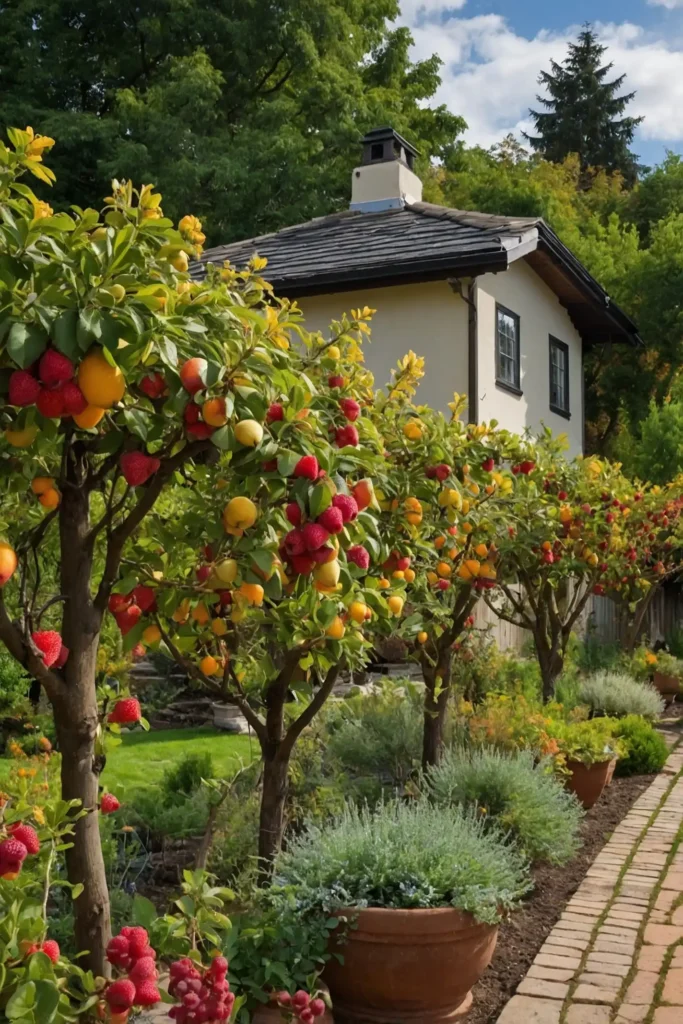
Incorporate dwarf fruit trees and berry bushes among your ornamental plants for a truly traditional cottage garden that produces food alongside flowers.
Even small gardens can accommodate compact varieties.
Espalier fruit trees against walls or fences to save space while adding architectural interest.
Underplant with compatible flowers that won’t compete for nutrients.
The blossoms, fruits, and autumn colors of these productive plants add seasonal interest throughout the year.
15: Strategic Plant Repeats

Create rhythm by repeating key plants throughout your garden rather than planting just one of everything.
This technique brings cohesion to the seemingly casual cottage style.
Choose 3-5 signature plants to repeat at intervals.
Classic options include catmint, coneflowers, and salvias that combine well with various companions.
The repetition guides the eye through your garden while maintaining the diverse plantings that cottage gardens celebrate.
16: Garden Accent Colors

Paint garden structures in colors that complement your planting palette.
A blue gate, green bench, or red trellis adds personality and creates focal points among the greenery.
Choose weathered or muted tones rather than glossy brights for authentic cottage charm.
Consider historical color schemes from the era your garden style references.
These colorful elements become garden landmarks while expressing your personal style within the cottage framework.
17: Vertical Growing Supports
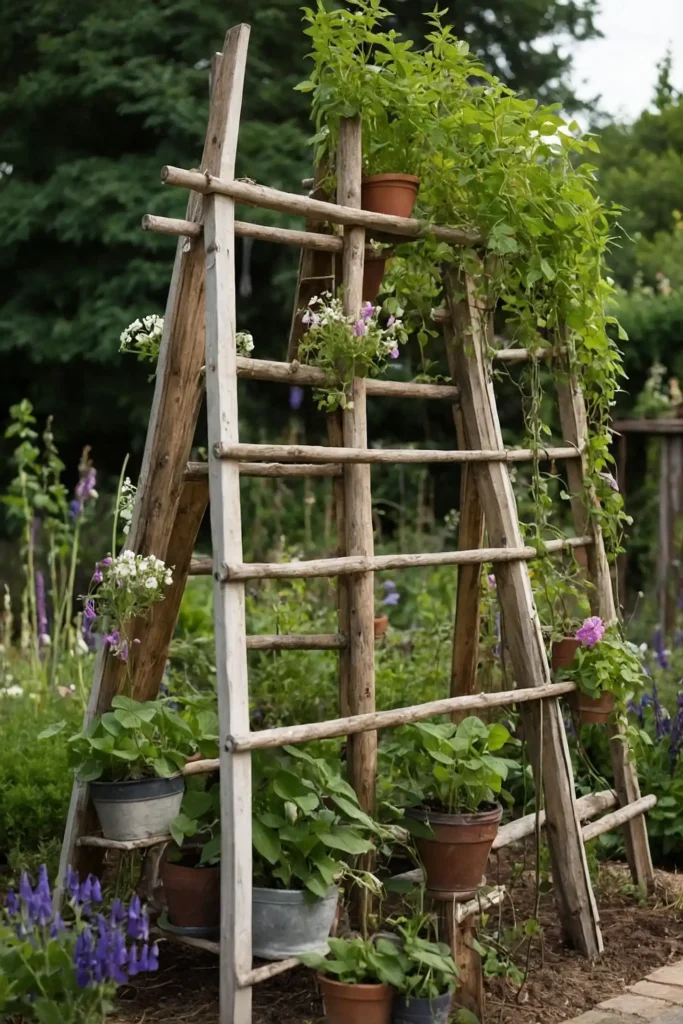
Install charming supports for climbing plants using materials like hazel branches, antique ladders, or repurposed architectural elements.
These practical structures add character while maximizing growing space.
Create tepees for sweet peas or runner beans using natural branches.
Repurpose old wooden ladders as ready-made plant supports with instant character.
The supports themselves become decorative elements, especially beautiful when vines have died back in winter.
18: Low Hedging Divisions
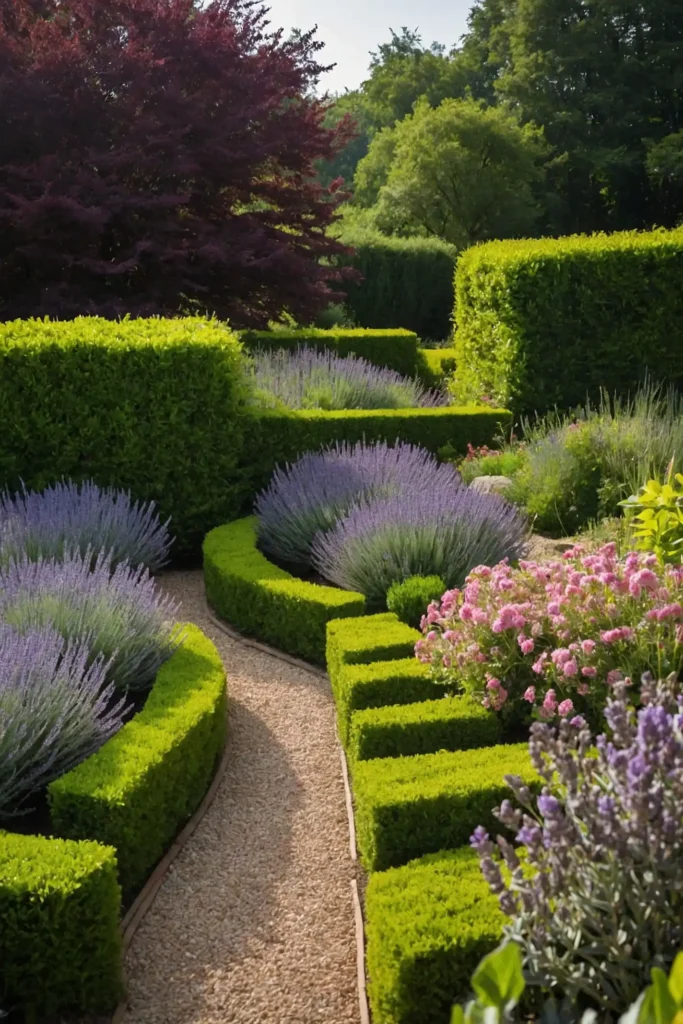
Define garden rooms or bed edges with low, informal hedges of lavender, boxwood, or germander.
These living boundaries bring structure to the exuberant cottage planting style.
Clip them into soft, slightly rounded forms rather than sharp geometric shapes.
Allow occasional flowers to remain for a relaxed rather than formal appearance.
These small-scale hedges organize your space while preserving the romantic, flowing feeling of a cottage garden.
19: Wildlife-Friendly Features

Incorporate elements that support pollinators and beneficial insects essential to a thriving cottage garden.
Include shallow water sources, insect hotels, and plants with different bloom shapes.
Leave some areas unmulched where ground-nesting bees can access soil.
Include night-scented flowers like evening primrose for moths and other nocturnal pollinators.
These thoughtful additions create a balanced ecosystem while honoring the cottage garden tradition of working with nature.
20: Weather-Worn Garden Art

Display antique garden implements, weathered statuary, or architectural salvage as artistic focal points.
These character-filled objects bring instant age and story to new garden spaces.
Position pieces where plants can softly grow around them, appearing as if they’ve always been there.
Choose items with personal meaning to create a garden that tells your unique story.
These decorative elements reward close inspection while adding year-round interest, especially valuable in winter.
21: Seasonal Bulb Layers
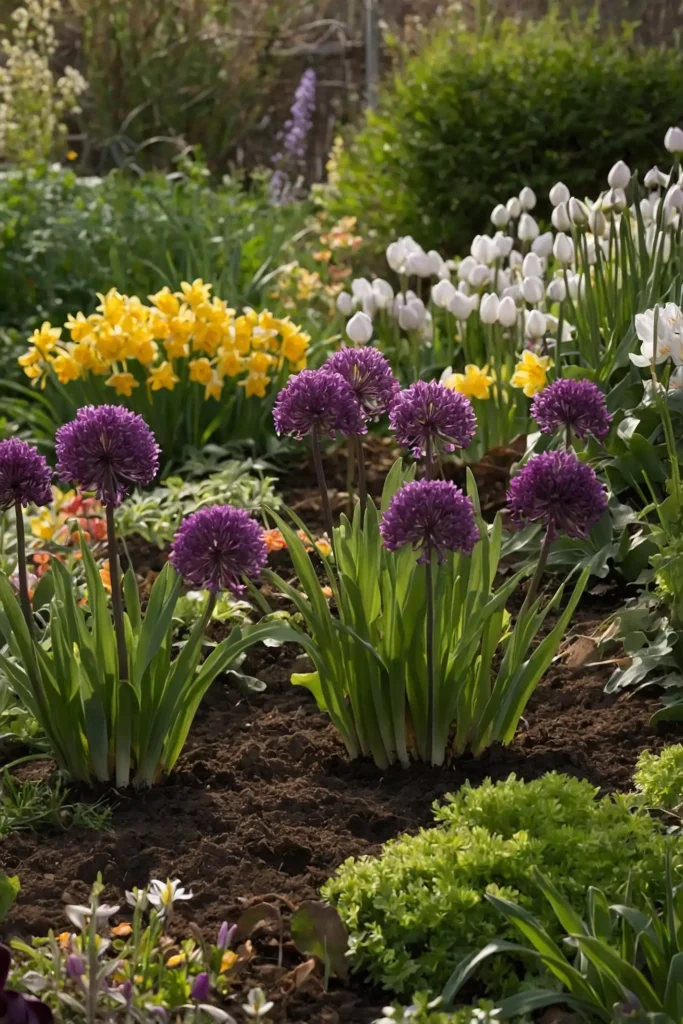
Plant bulbs in layers throughout your garden beds for successive blooming from late winter through early summer.
This technique maximizes color before perennials reach their peak.
Begin with snowdrops and crocus, followed by daffodils and tulips, then alliums.
Plant in generous drifts rather than single specimens for dramatic impact.
The emerging foliage and flowers weave beautifully between awakening perennials, creating the tapestry-like effect cottage gardens are known for.
22: Gentle Water Elements
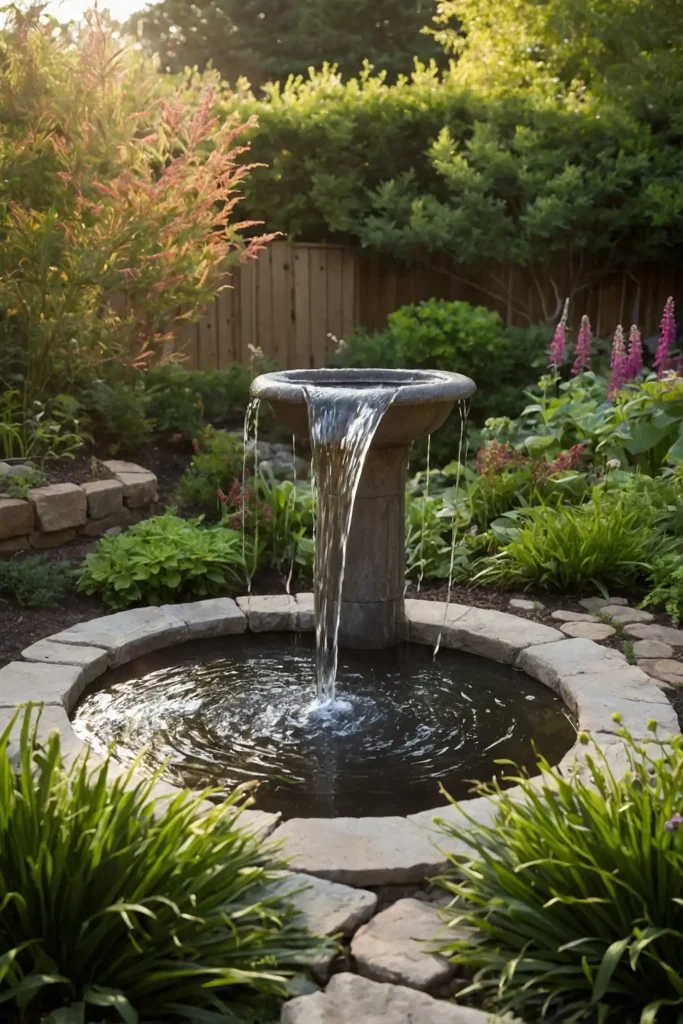
Include a simple water feature like a small pond, vintage birdbath, or bubbling fountain.
The sound and movement of water adds another sensory dimension to your cottage garden experience.
Choose naturalistic designs that appear to have evolved organically with the landscape.
Plant moisture-loving flowers like astilbe or Japanese iris nearby for a cohesive look.
Even a small water element attracts wildlife while providing the soothing sound of flowing water during garden relaxation.
23: Four-Season Framework
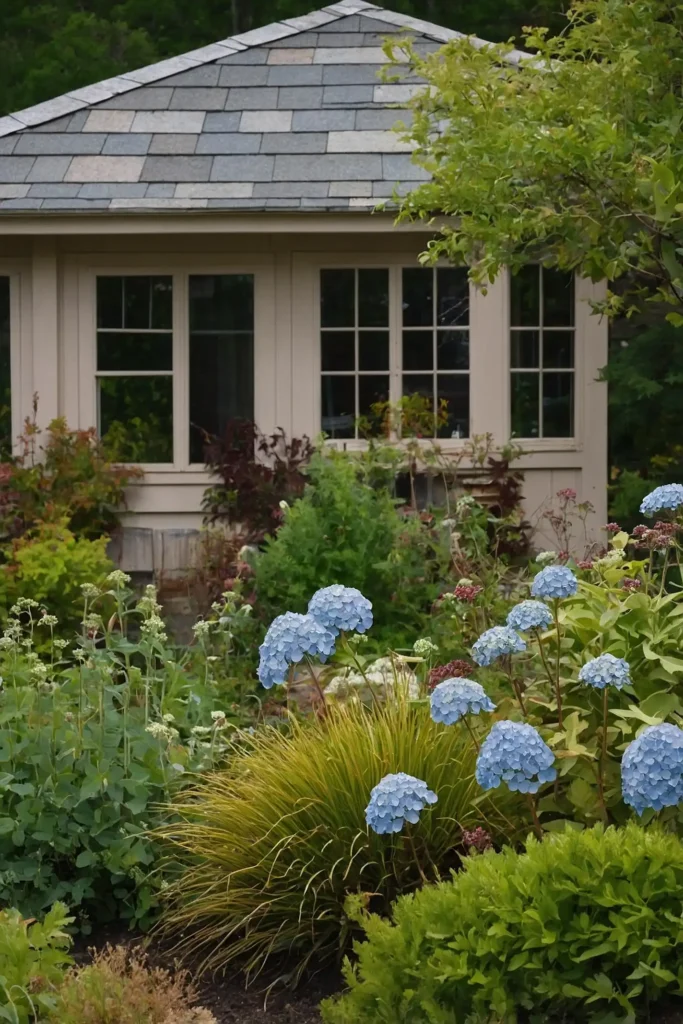
Ensure year-round structure with evergreen shrubs, ornamental grasses, and plants with interesting seedheads or winter silhouettes.
This backbone supports the exuberant summer display.
Include plants like hydrangeas whose dried flower heads provide winter interest.
Select perennials like sedum and coneflower that maintain attractive forms after frost.
This thoughtful planning ensures your cottage garden remains beautiful even during dormant months.
24: Edible Flowers Integration
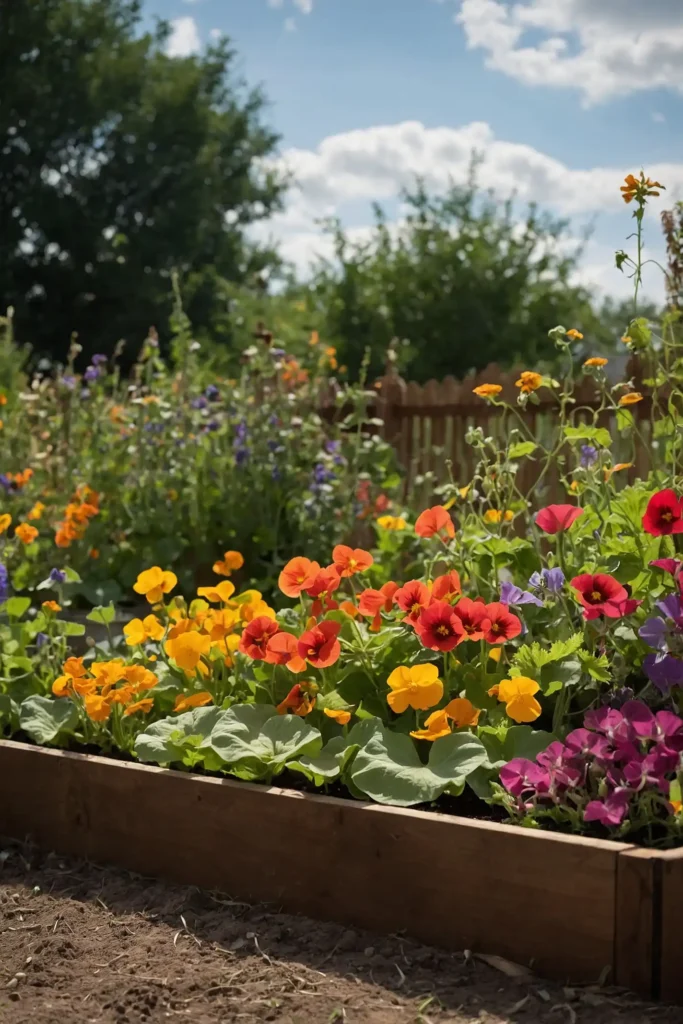
Incorporate edible flowers like nasturtiums, borage, and calendula throughout your garden beds.
These multitasking plants honor the practical origins of cottage gardens.
Use them to add color to salads, garnish desserts, or make herb-infused oils.
Their bright colors complement purely ornamental neighbors beautifully.
The dual-purpose nature of these plants maximizes your garden’s productivity while maintaining its ornamental appeal.
25: Garden Room Creation

Divide larger spaces into intimate garden rooms using structures, plantings, or elevation changes.
This traditional approach makes your garden feel larger and more interesting to explore.
Create distinct atmospheres in different areas—sunny and vibrant in one, cool and contemplative in another.
Connect rooms with inviting pathways that create a sense of journey.
This thoughtful organization provides multiple destination points while maintaining the cohesive cottage garden style throughout.
26: Pollinator Perch Stones

Place flat stones throughout your garden beds to provide landing spots for butterflies to bask and warm themselves.
These simple elements enhance your garden’s wildlife support.
Position stones where they’ll receive morning sun, helping butterflies warm up early.
Partially embed them for a natural appearance that blends with surrounding plantings.
These functional features appear as natural garden elements while significantly increasing butterfly activity.
27: Welcoming Front Gate

Install a charming gate at your garden entrance to create a definitive threshold between the outside world and your cottage sanctuary.
This boundary element signals entry into a special place.
Choose a design with personality—perhaps arched, decorated with ironwork, or painted a signature color.
Plant fragrant climbers nearby to enhance the arrival experience.
This welcoming element frames your garden view while creating anticipation for the magical space that lies beyond.
Conclusion
Your cottage garden should reflect your personality while embracing the joyful abundance this style celebrates.
Combine these ideas to create your own enchanting retreat that delights all year round.

